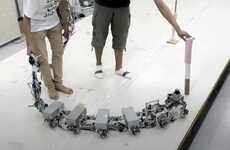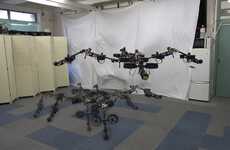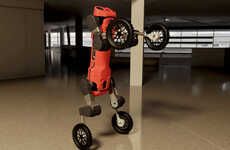
Thsi 3D-Printed Animal Replicates the Movements of an Amphibian
Laura McQuarrie — June 30, 2016 — Tech
References: 3ders.org
'Pleurobot' is the name of an impressive 3D-printed animal developed by a group of researchers from the École Polytechnique Fédérale de Lausanne (EPFL) in Switzerland. The bot is made with a series of 3D-printed bones and motorized joints, which gives the robotic creature the ability to move just like a real salamander. As well as being able to crawl and walk on land, the creature is able to swim in water. The finished Pleurobot is believed to be the most biomimetically realistic robotic salamanders in the world.
Aside from creating a novel robo-salamander that's a marvel of 3D printing, the researchers believe that what they learned about the salamander's spine will be able to inform how the spinal cord controls human bodily movements. This knowledge could be extremely beneficial for the creation of future therapies and prosthetics for amputee and paraplegic patients.
Aside from creating a novel robo-salamander that's a marvel of 3D printing, the researchers believe that what they learned about the salamander's spine will be able to inform how the spinal cord controls human bodily movements. This knowledge could be extremely beneficial for the creation of future therapies and prosthetics for amputee and paraplegic patients.
Trend Themes
1. Biomimetic Robots - The development of biomimetic robots opens new opportunities around the ability to create more lifelike robots designed to resemble and replicate animal movements
2. 3D Printing - Incorporating the use of 3D printing in the creation of robots enables a more efficient and cost-effective way to replicate animal movements
3. Spinal Cord Therapy - The creation of this robot enables the potential for a better understanding of the spinal cord and the potential for better future therapies and prosthetics for amputee and paraplegic patients
Industry Implications
1. Robotics - The development of biomimetic robots creates a new opportunity to create robots that are more functional in different environments and more natural on movements
2. Medical Devices - The potential for better understanding of the spinal cord and insights gained from it can lead to the potential for uncovering disruptive new approaches in the development of therapies and prosthetics for amputee and paraplegic patients
3. 3D Printing - The incorporation of 3D printing within the development of robots enables a more efficient and effective way, opening up opportunities for cost savings and greater customization
2.9
Score
Popularity
Activity
Freshness























